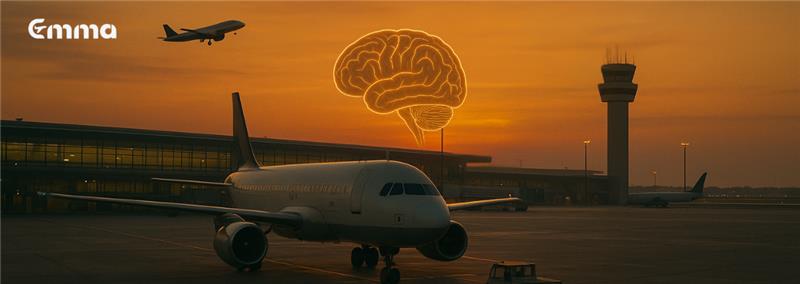Using Technology to Facilitate Continuity for the Aviation Industry During and After COVID-19

The aviation industry has suffered devastating losses due to the coronavirus outbreak. International Airport Review cites a report by IATA, predicting that the aviation industry could potentially observe a reduction in revenue of nearly $113 billion if the virus continues spreading globally. There is an increasing need for the introduction of measures to alleviate the financial impact of this pandemic. Perhaps the most potent solutions towards normalizing the circumstances of the aviation industry lie in the usage of technology with an aim to prevent the spread of the virus in airports/flights and to increase the operational efficiency of airport stakeholders. This blog post reviews technology that could further these aims and facilitate continuity for the aviation industry during this pandemic.
Passenger Journey: As reported by Thomas Pallini of Business Insider, many airlines allow for self-service check-ins whereby customers can use their booking credentials to check in online. This helps passengers avoid queues at the airport and also ensures that the beginning of their airport journey remains contactless. Many airlines allow other services (traditionally available through a check-in desk) to be availed online too, e.g. the purchase of extra baggage allowance or the selection/change of flight seats. If one can avoid checked baggage altogether, this would completely eliminate the need for a check-in. Following online check-in, many airlines also issue an electronic version of customers’ boarding passes. This allows for the pass to be stored on a digital, handheld device (e.g. cellphone) and scanned at the appropriate terminal, reducing the risk of virus transference through the handling of a physical pass at the boarding gate. As reported by Alfred Chua of Flight Global, Etihad Airways has begun testing a technological system which detects users of self-service facilities at airports for symptoms of COVID-19. This technology, developed by Eleneum Automation, can be used at key passenger touchpoints such as immigration, check-in or the baggage counter. Any passenger whose vital signs are indicative of the presence of the virus will be redirected towards official help.
Financial Improvement: Given the impact of COVID-19 on the profitability of the air transport industry, airports now face a distinct need to improve efficiency and limit avoidable expenses to the minimum. While the implementation of technology to contain the virus might require significant investment, this can be offset by the use of technology to facilitate airport operations, reducing costs due to inefficiencies. Many A-CDM (Airport Collaborative Decision Making) platforms offer a comprehensive set of tools that can be used to improve airport slot performance, enhance resource utilization and reduce ground delays. As per a report by EUROCONTROL, airports equipped with CDM functionality significantly reduced the cost of delays, saving nearly $1.2M in 2015. Over the course of the last decade, airports have come to increasingly rely on technology (artificial intelligence, in particular) to deal with the rise in passenger numbers, as per Jennifer Leigh Parker of Forbes. It seems that this reliance will only increase in the future as airports come to recognize the benefits afforded by technological systems to enhance the passenger journey and improve operational efficiency.



